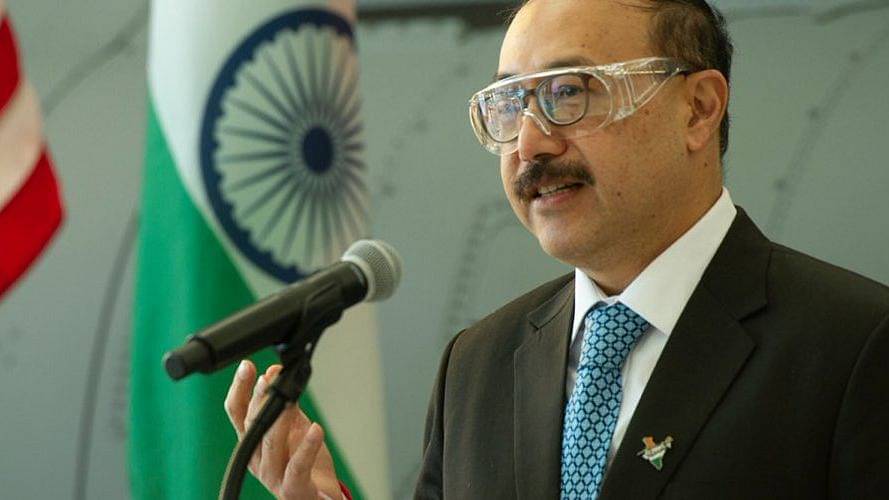The doubling of trade through land borders could further transform the Northeast, Foreign Secretary Harsh V Shringla said on Saturday.
In his virtual address at the Northeast Festival, Shringla spoke on India’s Act East Policy and what it means for Northeast. “We have a vision for this region that is captured in the 3 Cs – Connectivity, Commerce, and Cultural Commonalities,” Shringla said.
Here are ten most important points Shringla outlined in his address:
1.Only 10% of India’s trade goes through land borders. If we are able to even double this number, the effects on the Northeast would be transformative and would unlock even further value.
- We have revived five rail links that used to be operational between India and Bangladesh before 1965. The Prime Ministers of India and Bangladesh jointly inaugurated the rail link between Haldibari in West Bengal and Chilahati in Bangladesh during the virtual summit held this week. Work is ongoing on two more connections. The sixth pre-1965 rail link (Kulaura-Shahbazpur), work on which is underway, will revive the railway connectivity between Karimganj in Assam and Sylhet in Bangladesh. A railway that links Akhaura in Bangladesh to Agartala is under construction and will be ready by 2022 when India will commemorate 75th anniversary of its independence.
- Considerable efforts have been made in recent years to augment inland waterways connectivity between the North East and Bangladesh. Goods from West Bengal can now reach Tripura through waterways up to Ashuganj port in Bangladesh and further by road up to Agartala. Recently, a goods consignment was also moved from Kolkata to Agartala under the India-Bangladesh agreement on the use of Chittagong port for transporting goods to and from Northeast India. For the first time, Tripura was connected to Bangladesh through inland waterways route. This new route can further connect Tripura with the National Waterways of India. These new initiatives provide alternative and shorter routes for transporting goods between the Northeast and the rest of India through Bangladesh.
- The plan for twenty port townships along the Brahmaputra and Barak river systems to enhance inland water connectivity could galvanise multimodal linkages in the entire region.
- Road transportation links are also being improved. Indian and Bangladesh nationals can move by bus between Shillong and Dhaka and between Agartala and Kolkata via Dhaka. Air connectivity is increasing through the 13 operational major and minor airports in the Northeast. Direct flight connections between Guwahati and Bangkok and Guwahati and Dhaka have been initiated.
- BIMSTEC, an organisation which we strongly support, is working on a connectivity Master Plan, Coastal Shipping Agreement and Motor Vehicle Agreement. Its ambitious plans that are studying linking BIMSTEC and ASEAN, and BIMSTEC and the Ayeyawady – Chao Phraya – Mekong Economic Cooperation Strategy (ACMECS) would make the North East a logistical linchpin.
- The Kaladan multi-modal transport project will give the Northeast access to the sea through the Sittwe port in Myanmar. The Trilateral Highway will provide land connectivity, enabling people to drive between the Northeast and South East Asia. Two international entry/exit points have been operationalised at Tamu-Moreh and Rih-Zowkhawthar to increase connectivity with Myanmar. We are also a part of the Asian Highway Project.
- Plans include a four-lane trilateral highway linking India with Thailand via Myanmar – which could see expansion up to Laos, Cambodia and Vietnam. Railways that link India and Myanmar and further to Thailand, Laos, Singapore, Cambodia, Vietnam and Bangladesh are all very possible in the future.
- The hydropower of Himalayas has been used for the joint benefit of the Northeast and its neighbours through hydroelectric projects in Bhutan. We are also looking at exporting the surplus hydropower potential of the Northeast to Bangladesh and Myanmar.
- Our foreign policy initiatives for the development of the Northeast are not limited to neighbouring countries but extend further east. We have been collaborating with Japan for the economic development of the Northeast.
Source: East Mojo






